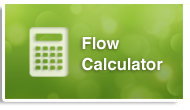What is Drip Irrigation?
Drip irrigation is the practice of applying small amounts of water and fertilizer uniformly across a specific area. The water and fertilizer are delivered directly to the crop root zone, eliminating runoff, evaporation, and drift. A properly designed and managed drip irrigation system gives producers the best uniformity and application efficiency available, consequently saving them time, energy, and water, all while maximizing yields.
There are two main types of drip irrigation systems – surface and sub-surface.
A surface drip irrigation system uses close emitter spacing (12”-18”) and a thin wall (8-10 mil) dripline injected 1” to 6” below the surface. These systems are often referred to as “temporary” because the dripline is retrieved and recycled yearly. The submains can be permanent or temporary. These systems are typically used on high value crops due to the yearly expense of new dripline and the labor for installation.
A subsurface drip irrigation (SDI) system uses 20” – 27” emitter spacing and a slightly thicker wall (13-15mil) dripline injected 8” – 14” below the surface. These systems are permanent, making design and installation critical to ensure longevity. SDI systems are mainly used in row crop agriculture but are making their way into some high value crops. Eco-Drip has been committed to SDI since installing our first system in 1980.


